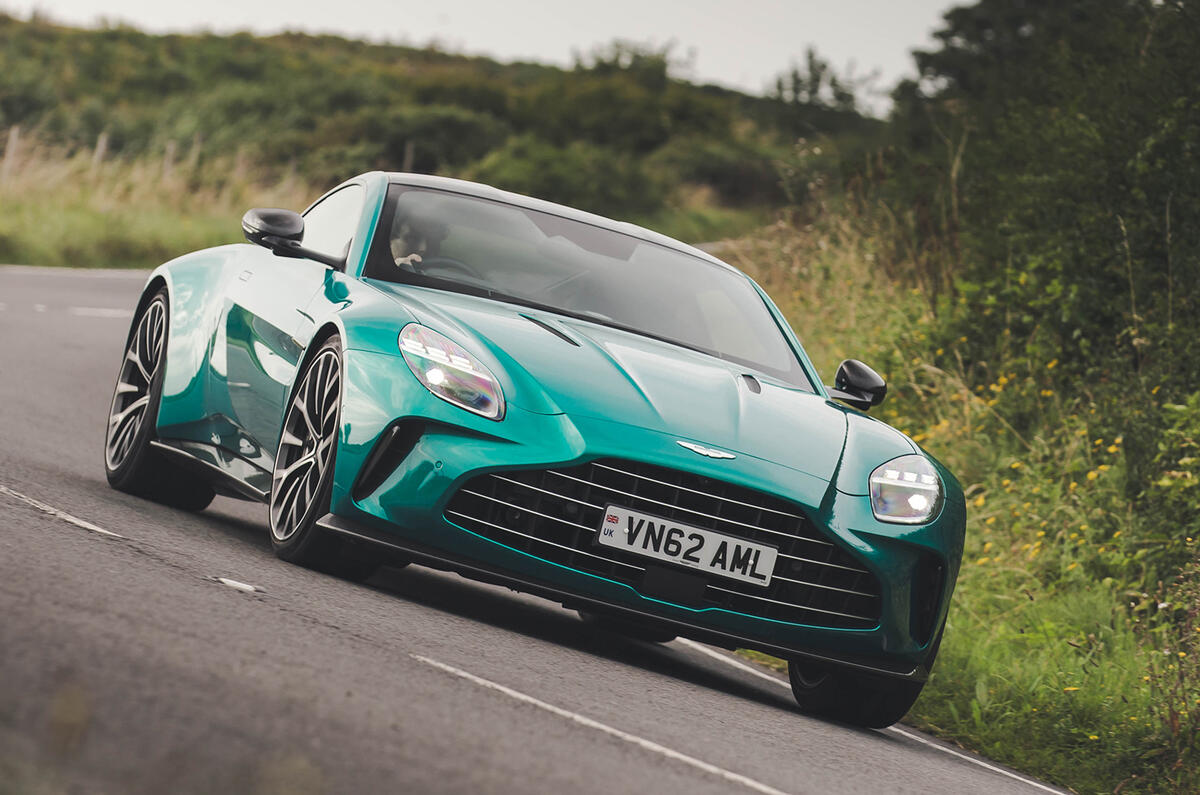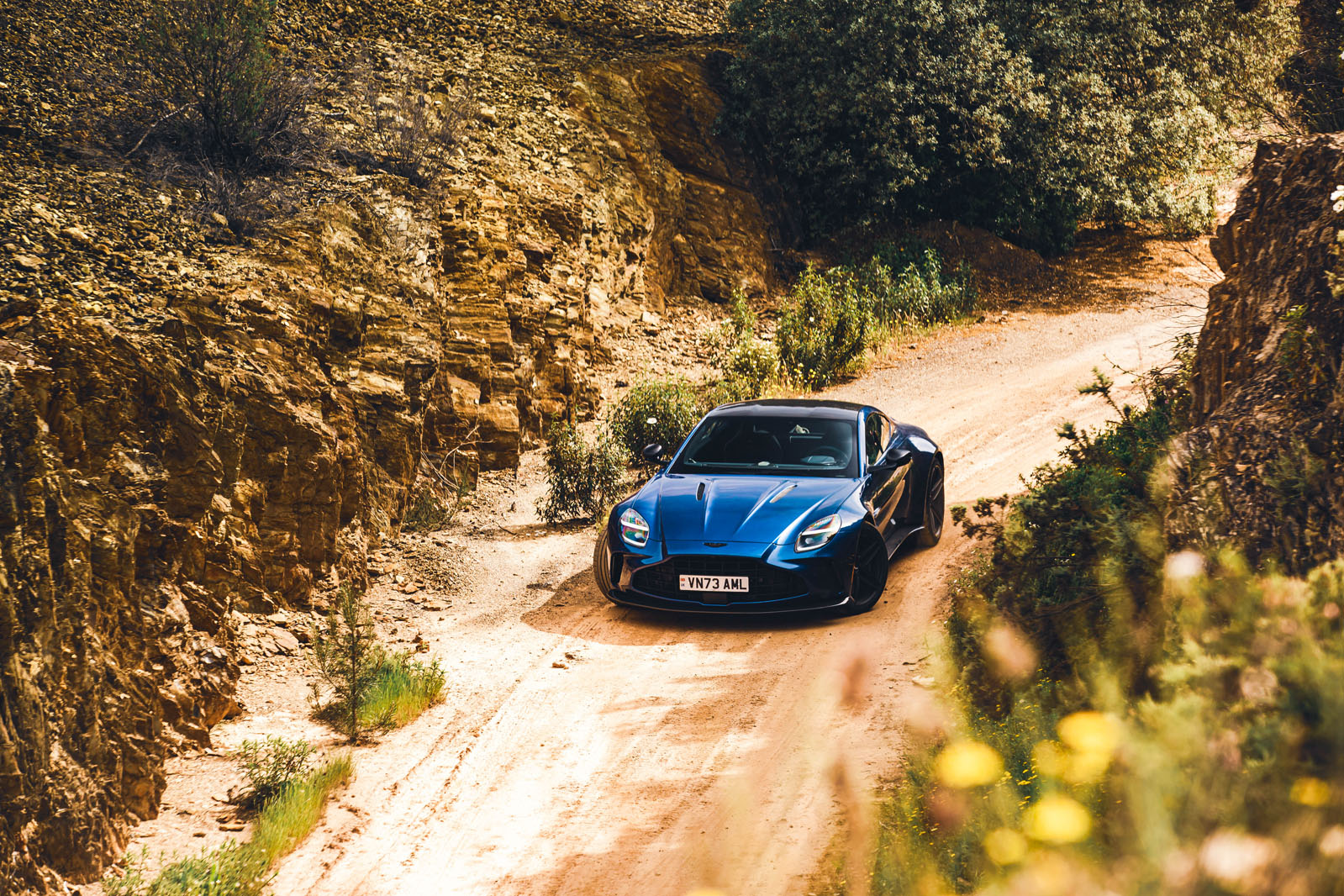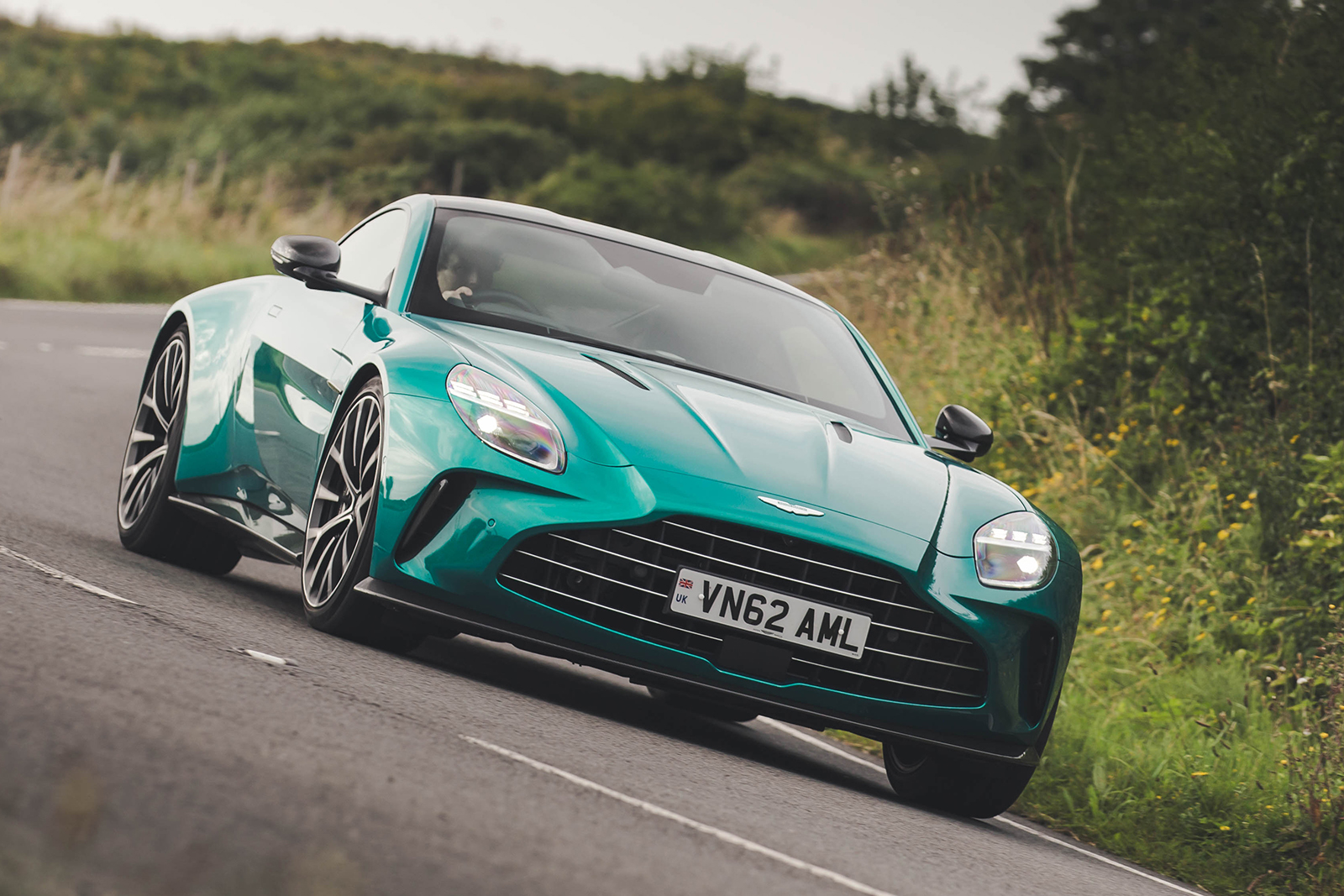The lighter one is still middling, and I preferred it. There are five drive modes, from Wet through to Track, which adjust the dampers through three stages and the steering through two weights. A short press of the stability control system puts it into a lighter mode, an extended press turns it off and opens up a nine-stage traction control, which defaults to level five (for optimum launch), limits slip in level one, allows smoky getaways in eight and is all off in nine.
The Monteblanco circuit near Seville, where we had a track outing, has some lumps on it, to the extent that Aston recommended Sport+ rather than Track damper settings. Road behaviour here is mostly just amplified, so what is an old-school front-engined handler can feel a bit clumsy until you get into it. On a constant throttle, there is a touch of steady-state understeer, as there should be, so it pays to plant the nose and keep it that way by slowly bleeding off of the brakes as you turn in.
The steering weights up willingly and the rear starts to become more mobile. Get into it, and get it right, and it’s a charmingly capable bruiser, with a willingness to absorb mid-corner bumps and retain its composure, and slide around predictably if you choose. But I wonder if it does feel more at home as a road car. Rather satisfyingly, that’s fine: I suppose it should do. And there will surely be more track-happy versions to come.
On the road in the UK
Discovering exactly how a car marketed on its ability to make its owner feel as urbane as possible harnesses such an uncivilised reserve of power on the medieval donkey tracks we call B-roads, and without front driveshafts, should be fascinating.
So fascinating, in fact, that in a few weeks’ time we will be revisiting the Vantage in considerably more depth, with a full 3000-word, UK-based road test derived from 500 miles of on-road driving and the usual gamut of telemetry-driven tests at MIRA. However, before then, here’s an amuse-bouche of some initial UK observations.
The car’s increased width is small but impactful. The body of the new Vantage is actually wider than that of the DB11, and you notice this on UK roads. The subtle feeling of awkwardness it brings doesn’t last, however. The wild off-centre steering response of the Mk2 seems to have been tamed, which is helpful when you’re threading 590lb ft this way and that. There’s still a high degree of agility but the car is more intuitive and easier to place.
It’s clear that the electronic limited-slip differential is pretty tightly wound. In combination with all that torque, it might just make this the most throttle-adjustable new car on sale. We will have to drive the two together to confirm, but if the Roma has more elegance on turn-in, the Vantage is pure panto on exit. It’s immensely exciting at times, although it can become tiring on a damp road while the Porsche 911 Turbo is just getting warmed up.

On dry roads, the chassis, with its stiffened rear subframe and Bilstein DTX dampers, does a good job of hooking up all that torque – as well it might, with 325-section rear tyres, versus the 295s on the Mk2. It means that you really can enjoy the performance, because the requisite body control and traction are there.
The gearbox is appropriately smooth for a car of this type but can take its time in processing downshifts when you’ve got the knife between your teeth. That said, peak torque hits at 2000rpm, so why downshift at all?
Its road manners are fairly good. I suspect our microphone will record quite high decibels at speed, but the subjective nature of the road roar here isn’t especially tiresome. Given Aston’s bold repositioning of the Vantage more into the serious super-sports car sphere than the GT sphere, ride quality is more civil than expected. In the default, softest damper mode, it will amble around town comfortably enough. Then, when you’re really cracking on, it takes an especially evil surface to get the better of the suspension.
Indeed, rather than power, it’s the way the Vantage’s sense of intent and poise coalesces at speed that is arguably its defining trait. The suspension thrives on big speeds and high loads, and you better believe that the big V8 wants to progress matters to that point.
If there’s a weak spot, it emerges in the 40mph crawl along pitted roads. The 202mph Mk3 Vantage doesn’t especially enjoy this kind of environment, often becoming a bit cumbersome and reactive.
But it’s clearly versatile. At times, it can seem extraordinarily so. Its speed and composure are a good deal beyond what the old car managed. Definitive verdict to come.
















































